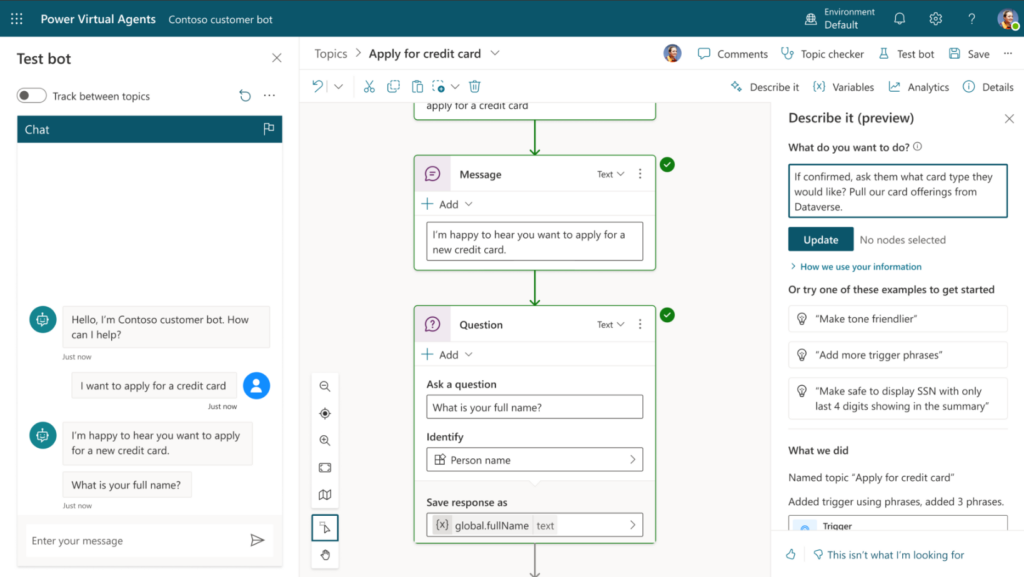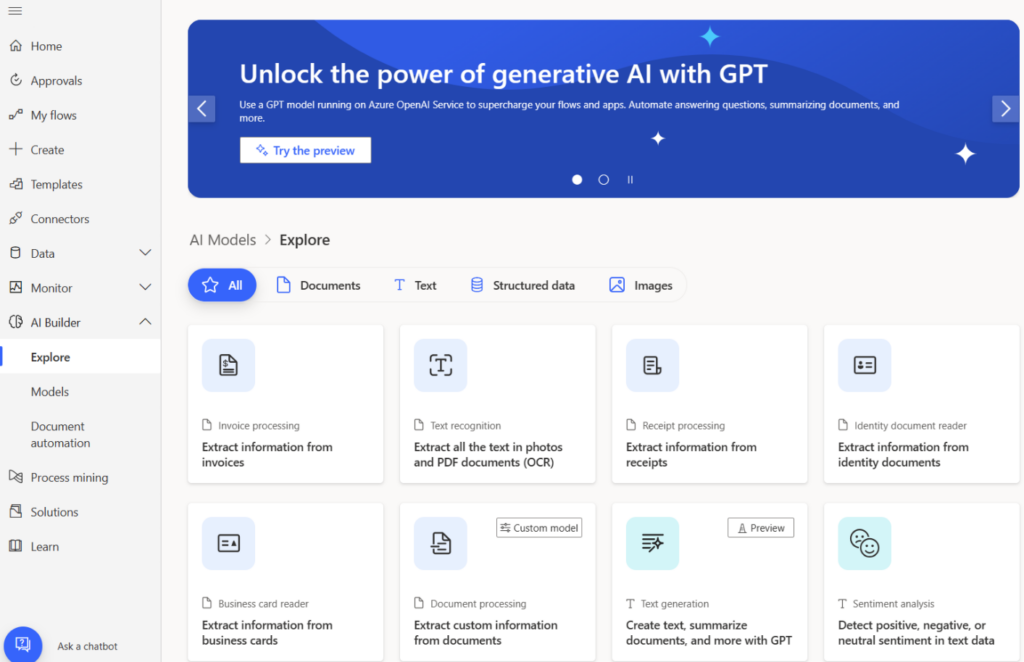This site is also available in: Deutsch (German)
3 use cases compiled for your Azure environment. These do not currently relate to a specific industry, but will give you an insight into the technical possibilities.
You may be able to fill in the gaps, which could be interesting for you. However, we have written down some ideas below as an incentive.
- Business Intelligence with AI
The goal of business intelligence is to provide organizations with insights into current and historical data thatenable them to make better strategic decisions and gain a competitive advantage.
The data flow is from left (source system) to right (end user)
– The source systems (ERP, CRM, Excel, etc.) can contain large amounts of data in any format. The system can be be a cloud solution or is hosted on private servers.
– Azure Data Factory collects data from the various source systems via automated pipelines.
– Collected data is transferred to ar clipboard in the Azure Data Lake, where it can be used for reporting and data analytics.
– Predefined calculations can optionally be an Azure Data Warehouse to provide reliable key figures.
– Data from the data warehouse or data lake can be used in Power BI to create meaningful visualizations. Power BI offers AI to quickly gain insights and visualize data.
– Azure Synapse Analytics accesses the data warehouse or data lake to create more complex models such as predictions.
- Virtual Agents (AI Chatbots)
Virtual Agents are intelligent chatbots with AI capabilities. Microsoft Power Virtual Agents offers a low-code solution for creating intelligent bots.Virtual Agentscan be integrated into Microsoft Teams, Power Platform or any website. The Azure OpenAI Service can also be linked to Virtual Agents and supports more advanced AI use caseswith GPT-4 and DALL-E.
- Power Platform – AI Builder
Power Platform AI Builder enables the use of AI modelsthat have been trained with personal data such as documents, text, structured data or images. AI Builder can be integrated with Power Apps, Power Automate, SharePoint and Teams.be integrated.
A large number of prefabricated models are already available:
– Invoice processing
– Text recognition
– Sentiment analysis
– Receipt processing
– Entity extraction
– ID reader
– Key phrase extraction
– Business card reader
– Category classification
– Text generation
– Speech recognition
– Text translation
– Image description
If no model fulfills the use cases, you can create your own AI model. However, this requires large amounts of data.
Additionally 14 use cases:
- Credit risk assessment: Use of machine learning algorithms to assess the creditworthiness of customers and automate credit decisions.
- Fraud detection: AI analyzes transaction data to identify suspicious activity and detect fraud in real time
- Customer support and chatbots: Implementation of chatbots and virtual assistants to provide round-the-clock customer support and answer frequently asked questions.
- Personalization of offers: By analyzing customer behavior and preferences, banks can create tailored product offers to increase customer loyalty.
- Asset management: AI supports the optimization of portfolios, risk assessment and the provision of investment recommendations for clients.
- Automated compliance: In the financial sector, compliance with regulations is crucial. AI helps to monitor and ensure compliance with regulations.
- Credit card fraud prevention: AI detects suspicious activity on credit card accounts in real time and blocks transactions to protect customers from fraud.
- Customer analysis: By analyzing customer behavior and data, banks gain insights that help in the development of marketing strategies and customer loyalty campaigns.
- Payment processing: Improving the efficiency and security of payment processing through intelligent automated processes and blockchain technology.
- Forecasting and risk management: AI supports the prediction of market developments and risks in order to make well-founded business decisions.
- Customer identification and authentication: Use of biometric authentication such as facial recognition or fingerprint recognition for secure access and transaction verification.
- Voice and text processing: Analyze customer feedback, emails and social media interactions to gain insights into customer satisfaction and respond to customer inquiries.
- Resource optimization: AI is used to manage resources such as store operations and staff more efficiently.
- Credit scoring: Use of AI models to calculate credit scores based on customer and transaction data.


